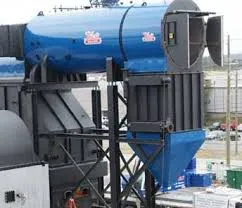- Afrikaans
- Albanian
- Amharic
- Arabic
- Armenian
- Azerbaijani
- Basque
- Belarusian
- Bengali
- Bosnian
- Bulgarian
- Catalan
- Cebuano
- China
- China (Taiwan)
- Corsican
- Croatian
- Czech
- Danish
- Dutch
- English
- Esperanto
- Estonian
- Finnish
- French
- Frisian
- Galician
- Georgian
- German
- Greek
- Gujarati
- Haitian Creole
- hausa
- hawaiian
- Hebrew
- Hindi
- Miao
- Hungarian
- Icelandic
- igbo
- Indonesian
- irish
- Italian
- Japanese
- Javanese
- Kannada
- kazakh
- Khmer
- Rwandese
- Korean
- Kurdish
- Kyrgyz
- Lao
- Latin
- Latvian
- Lithuanian
- Luxembourgish
- Macedonian
- Malgashi
- Malay
- Malayalam
- Maltese
- Maori
- Marathi
- Mongolian
- Myanmar
- Nepali
- Norwegian
- Norwegian
- Occitan
- Pashto
- Persian
- Polish
- Portuguese
- Punjabi
- Romanian
- Russian
- Samoan
- Scottish Gaelic
- Serbian
- Sesotho
- Shona
- Sindhi
- Sinhala
- Slovak
- Slovenian
- Somali
- Spanish
- Sundanese
- Swahili
- Swedish
- Tagalog
- Tajik
- Tamil
- Tatar
- Telugu
- Thai
- Turkish
- Turkmen
- Ukrainian
- Urdu
- Uighur
- Uzbek
- Vietnamese
- Welsh
- Bantu
- Yiddish
- Yoruba
- Zulu
Sep . 15, 2024 11:39 Back to list
Aluminum Melter - Efficient Aluminum Melting Solutions
The Aluminum Melter A Key Component in Aluminum Production
Aluminum has emerged as one of the most widely used metals in various industries, ranging from construction to automotive manufacturing. The production of aluminum involves several intricate processes, among which aluminum melting holds critical importance. At the heart of this operation lies the aluminum melter, an essential piece of equipment that facilitates the transformation of solid aluminum scrap into molten aluminum, ready for further processing and alloying.
The aluminum melting process begins with the collection of aluminum scraps, which can include everything from used beverage cans to scrap from manufacturing processes. Before entering the melter, the aluminum must be sorted to remove contaminants such as plastics, rubber, and other metals. Effective sorting ensures that the melting process yields high-quality molten aluminum with minimal impurities.
Once the scrap is prepared, it is fed into the aluminum melter. This machine operates at extremely high temperatures, typically between 660°C and 750°C (1220°F and 1380°F), the point at which aluminum melts. The melting chamber is designed to provide controlled heating, often using various fuel sources such as natural gas, oil, or electricity. Modern aluminum melters are engineered for efficiency, allowing for significant energy savings while maintaining consistent melting rates.
One of the key considerations in the design of an aluminum melter is the type of furnace used. Common types include gas-fired, electric arc, and induction furnaces. Each type has its advantages and disadvantages, depending on the scale of operation and specific requirements. For example, electric arc furnaces are known for their efficiency and lower emissions, making them a popular choice in contemporary melting operations.
aluminum melter

In addition to converting scrap into molten aluminum, the melter plays a crucial role in alloy production. By adjusting the composition of the molten aluminum with various alloying elements, manufacturers can create aluminum that meets specific mechanical properties required by different applications. This capability is vital to cater to the diverse needs of industries, from aerospace to packaging.
Furthermore, maintaining the quality of molten aluminum is crucial. This is achieved through regular sampling and testing to ensure that the chemical composition adheres to industry standards. Temperature control is also paramount, as overheating can lead to oxidation and loss of alloying elements, ultimately affecting the final product's quality.
The aluminum melting process is not without its environmental challenges. Traditional melting methods can produce significant greenhouse gas emissions, particularly when fossil fuels are used. However, advancements in technology have allowed for the development of more sustainable practices, such as the use of renewable energy sources and the introduction of emissions-reducing technologies in aluminum melters. These innovations are essential for the industry's transition toward more environmentally friendly operations.
In conclusion, the aluminum melter is a vital component in the aluminum production chain. It not only facilitates the transformation of scrap into usable metal but also plays a significant role in the creation of various aluminum alloys. As the industry continues to evolve toward more sustainable practices, the efficiency and environmental impact of aluminum melters will remain critical areas of focus. With ongoing advancements in technology, the future of aluminum melting looks promising, ensuring that this versatile metal remains a cornerstone of modern manufacturing.
-
Durable Cast Iron Water Main Pipe | AI-Optimized Design
NewsAug.05,2025
-
8mm Thin-Walled Cast Steel Manhole Cover Pallet Bottom Ring | Durable
NewsAug.04,2025
-
Premium Cast Iron Water Main Pipe: Durable, Corrosion-Resistant
NewsAug.03,2025
-
Durable Cast Iron Water Mains | AI-Optimized Systems
NewsAug.02,2025
-
High-Efficiency Propane Boiler for Baseboard Heat | Save Energy
NewsAug.01,2025
-
Premium Source Suppliers for Various Gray Iron Castings
NewsJul.31,2025


